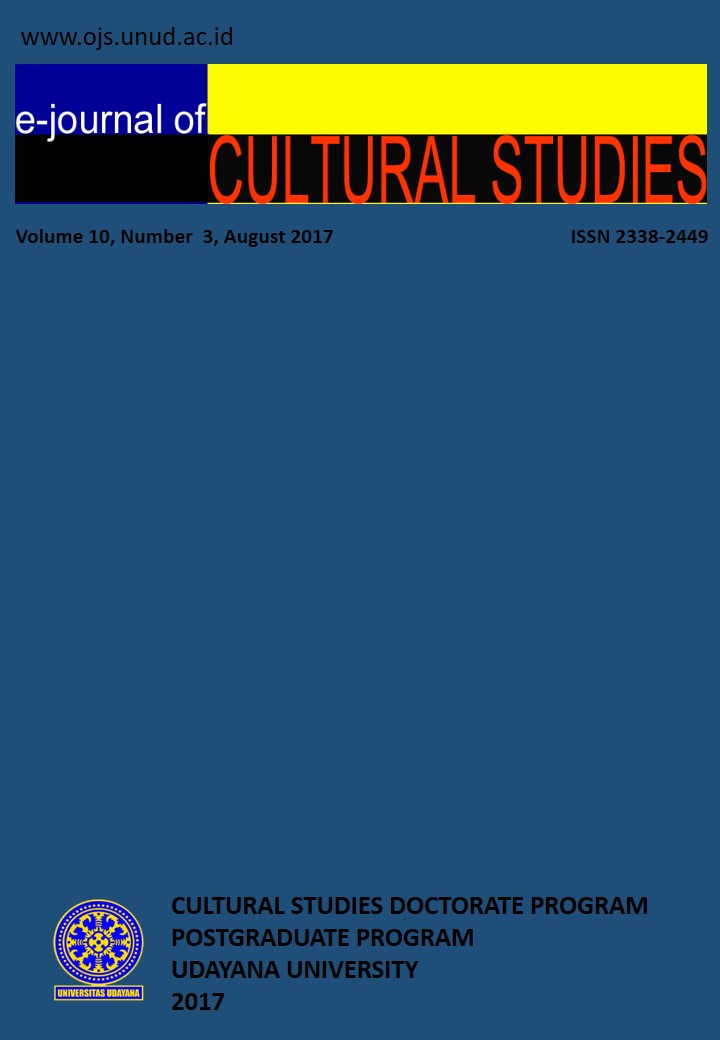POWER BEHIND HARMONY: CRITICAL ETHNOGRAPHY OF RELATION BETWEEN CHINESE ETHNIC GROUP AND BALINESE ETHNIC GROUP AT PUPUAN VILLAGE, TABANAN, BALI
Abstract
The harmonious relation between the ethnic groups living at Pupuan Village can be evidenced by the inter-ethnic marriages. The problems of the present study can be formulated in three questions. They are why the Chinese ethnic people can live harmoniously with the Balinese ethnic people, how is the dynamics of the power behind the harmonious relation between the Chinese ethnic people and Balinese ethnic people at Pupuan Village, and how the educational model implemented by the Chinese ethnic people and Balinese ethnic people is developed to contribute to the harmonious relation between the two ethnic groups from the ethno pedagogic perspective. The descriptive and qualitative method was used in the present study. The data were collected through in-depth interview, observation, and documentary study. The data were analyzed using the interactive analysis method. The theories used include the Theory of Practice proposed by Bourdieu, the Theory of Discourse of Power/Knowledge proposed by Foucault, theory of Habernas Education, and so forth.
The result of the study shows that there are several reasons why the relation between the Balinese ethnic people and Chinese ethnic people has become harmonious. They use power and capital. The Balinese ethnic people use the spiritual capital (the capital of cultural power) through the values of the local genius. The Chinese ethnic people use the socio-economic capital they have to make the domination of the Balinese people balanced. The dynamics of the power behind harmony shows that the relation between the two ethnic people at Pupuan Village is made to be diluted resulting from the power of the internal (local) people and the external (national) people which can be seen from the religious aspect, political aspect, socio-cultural aspect, and socio-economic aspect. The ethnopedagogic educational model is developed using different media such as the societal organization, the social activity in the forms of ngayah (doing voluntary religious things) and ngoupin (helping other people living in the neighborhood prepare and perform their traditional and religious activities).







